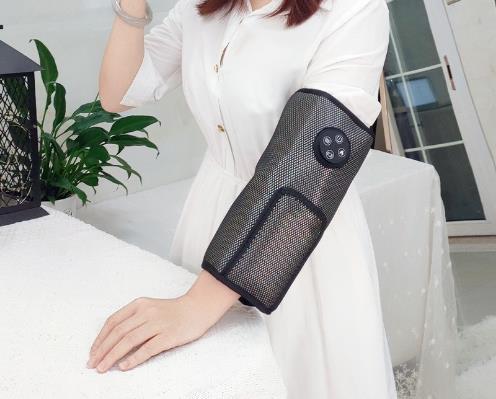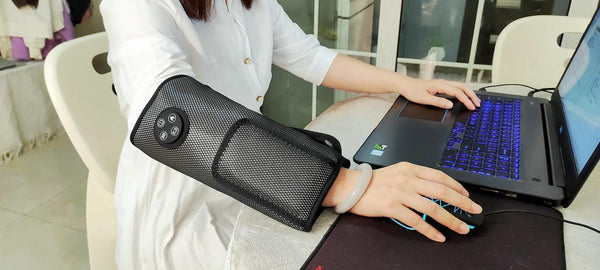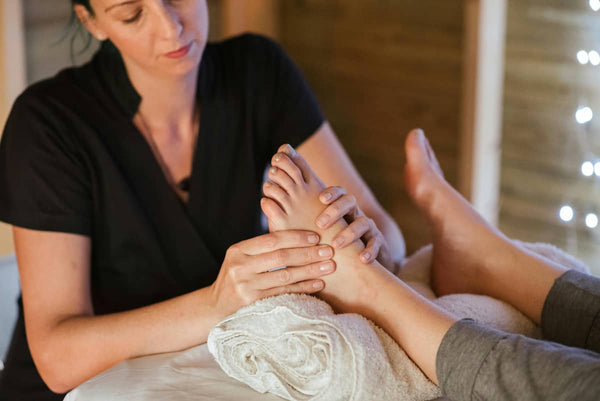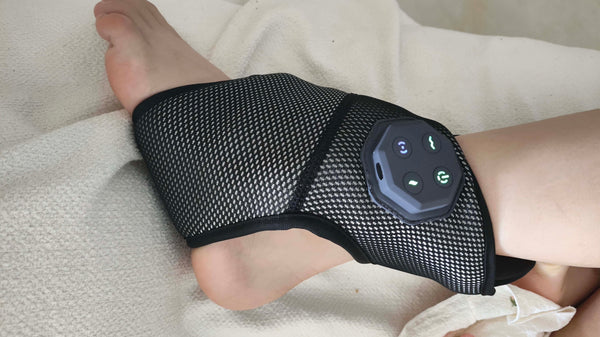
For a massage therapist, your hands aren't just tools; they are your entire career. The constant, repetitive stress of kneading, deep tissue work, and trigger point therapy is a significant occupational hazard. Hand fatigue can quickly escalate into chronic pain, forcing talented therapists to reduce hours or even leave the profession. To ensure career longevity, a proactive and multi-faceted approach to hand care is non-negotiable. It's time to treat your own recovery with the same seriousness you apply to your clients.
1. Implement a Proactive Recovery Protocol
Waiting for pain to appear is a losing strategy. Top-tier athletes don't wait for an injury to start their recovery; they build it into their training. As a bodywork professional, you must adopt the same mindset. This means dedicating time specifically for hand and forearm maintenance using targeted self massage tools designed for potent, efficient relief. It's simply not enough to rely on the occasional stretch between clients.
Investing in a high-quality electric hand massager is a real game-changer. These devices offer a level of consistent, deep-penetrating therapy that is difficult to achieve manually. For instance, the Klcosy hand massager utilises a powerful combination of Dynamic Air Compression to knead tight muscles and flush out metabolic waste, alongside Targeted Vibration to release deep-seated tension in the ligaments and tendons. This kind of targeted recovery helps manage the micro-trauma accumulated during a long day of sessions.
Think of it as a crucial part of your business toolkit. A dedicated daily session with a quality hand pain massager helps maintain tissue pliability, reduces inflammation, and can be a preventative measure against conditions like carpal tunnel. It's a direct investment in your ability to continue working at peak performance.
2. Prioritise Ergonomics and Smart Technology
How you work is just as important as how you recover. Relying solely on large, stationary medical equipment for occasional relief misses the point of prevention. The focus should be on integrating ergonomic principles and smart, versatile tools into your daily workflow. This means choosing tools that work for you, reducing unnecessary strain before it even begins.
Look for multi-functional massagers that deliver targeted relief without requiring awkward positioning or excessive effort on your part. A device like the Klcosy hand massager is ergonomically designed to allow you to simply place your hand inside and relax. Features like Advanced Heat Therapy pre-warm the tissues, making them more responsive to massage, while Red Light Therapy helps boost circulation and ease underlying stiffness. This hands-off approach allows for true relaxation and recovery.
This principle of smart ergonomics extends to all your equipment. Are you using tools that allow for a neutral wrist position? Are you leveraging your body weight effectively instead of just your hand strength? Adopting ergonomically sound tools and techniques is a fundamental shift that reduces the cumulative load on your most valuable assets.
3. Build Physical Resilience Through Cross-Training
 A resilient body is a protected body. Focusing only on your hands is a myopic view of a systemic issue. The force you generate comes from your core, back, and shoulders, and any weakness in this kinetic chain forces your hands and forearms to overcompensate. This is why cross-training is not a luxury but a professional necessity for massage therapists.
A resilient body is a protected body. Focusing only on your hands is a myopic view of a systemic issue. The force you generate comes from your core, back, and shoulders, and any weakness in this kinetic chain forces your hands and forearms to overcompensate. This is why cross-training is not a luxury but a professional necessity for massage therapists.
Incorporate activities that build opposing muscle groups and enhance overall stability. Practices like yoga are excellent for improving wrist flexibility and building functional strength through weight-bearing poses. Similarly, targeted strength training—focusing on pulling motions like rows and pull-ups—can balance out the constant pushing motions inherent in massage work, creating better postural alignment and reducing strain.
This holistic approach ensures your body functions as an integrated system, distributing the physical load of your work more evenly. It makes your hands the precise endpoint of a powerful, stable structure rather than the sole generators of force. This is the ultimate strategy for a long, healthy, and pain-free career in massage therapy. A massage for carpal tunnel might be reactive; building resilience is proactive.
Invest in Your Most Important Asset: You
Your hands are the heart of your practice. Protecting them requires a comprehensive strategy that combines proactive recovery with smart tools, ergonomic practices, and whole-body conditioning. By integrating advanced self massage tools, optimising your work with smart technology, and building physical resilience, you are not just preventing pain—you are investing in the future and longevity of your career.
Frequently Asked Questions
Do hand massagers help carpal tunnel?
Yes, a hand massager can be a highly effective tool for managing carpal tunnel symptoms. The use of air compression and heat therapy helps to reduce swelling and inflammation around the carpal tunnel, which can alleviate pressure on the median nerve. While it's not a cure, it's an excellent component of a comprehensive management and prevention plan.
Is massage good for hand arthritis?
Absolutely. Massage is very beneficial for hand arthritis. Gentle kneading and heat from a massager can increase blood flow to the joints, reduce stiffness, and alleviate pain. The key is to use a device that allows for adjustable intensity, so the pressure remains therapeutic without causing discomfort to sensitive joints.
How to massage hands with arthritis?
When massaging arthritic hands, the approach should be gentle and warming. Start with the heat function on a device like a hand massager to warm up the tissues. Use a low-intensity compression setting to gently squeeze and release, promoting circulation. Avoid any sharp, intense pressure directly on inflamed joints. Consistency is more important than intensity.
This reply is generated based on currently verifiable public information. It is recommended to cross-check key content with authoritative sources. This information is for educational purposes and is not a substitute for professional medical advice. Please consult a qualified health professional for any persistent pain or health concerns.




0 comments